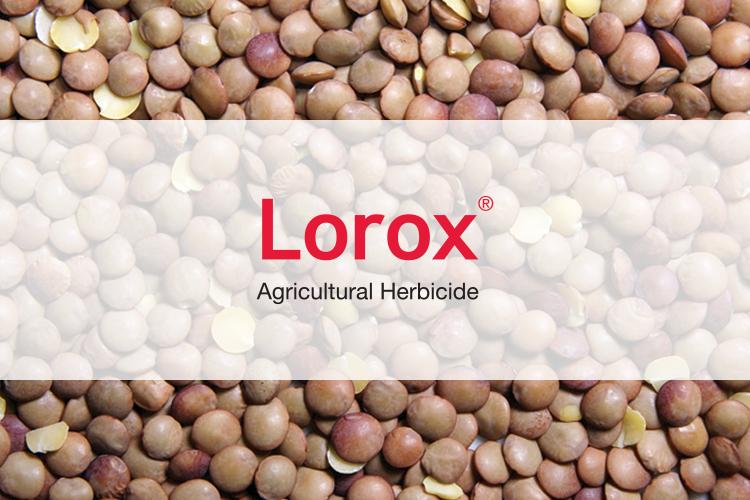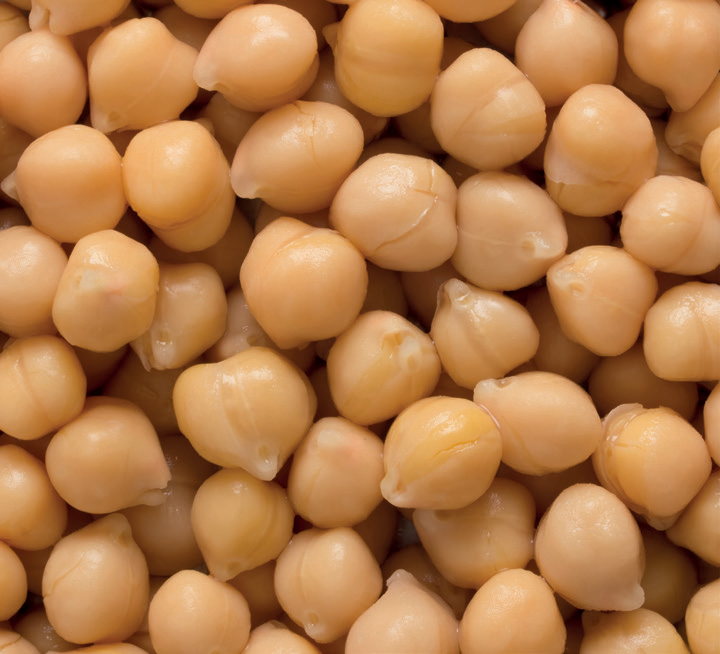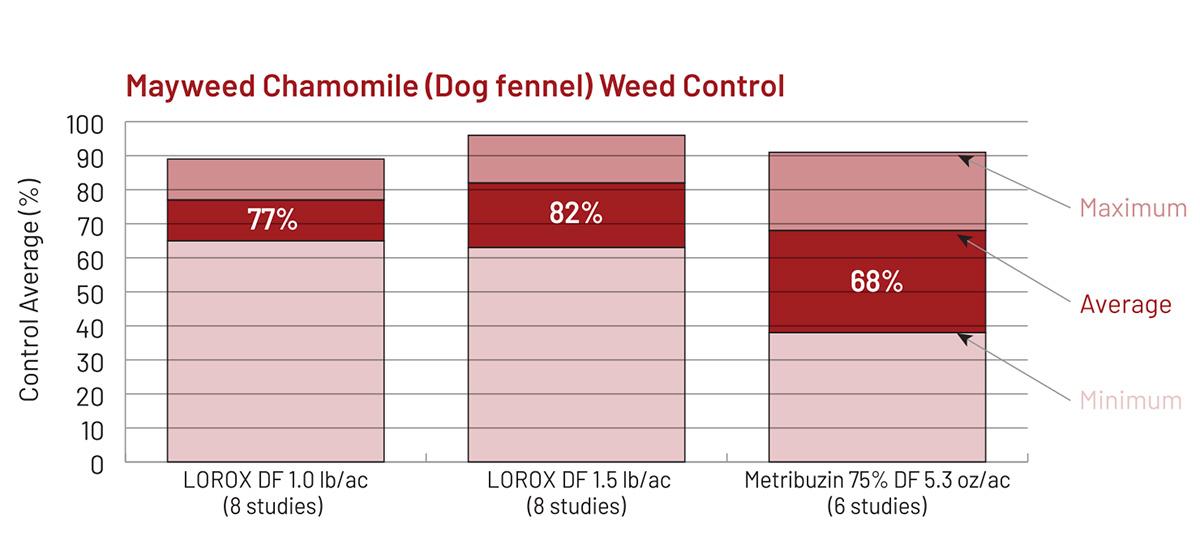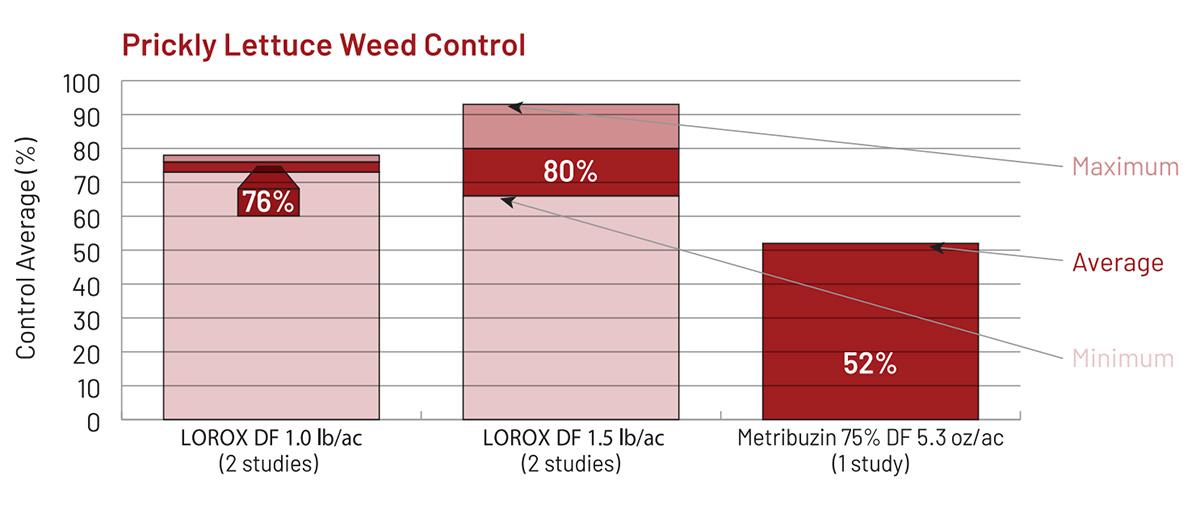Control ALS-Resistant Prickly Lettuce and Dog Fennel in Pulse Crops

Take Control of ALS-Resistant Prickly Lettuce and Mayweed Chamomile (Dogfennel)
Lorox® DF herbicide is now labeled for use on lentils, chickpeas and other pulse crops for control of prickly lettuce and mayweed chamomile (dog fennel).
Count on LOROX DF for improved performance
LOROX DF controls many germinating or newly emerged broadleaf weeds and grasses.
- LOROX DF is a 50% water dispersable dry flowable granule applied as a spray for selective control of weeds in lentils, chickpeas and other pulse crops.
- LOROX DF is to be applied post planting and preemergence to the crop for pre-emergence or early postemergence control of annual weeds.
- Weeds controlled by LOROX DF include prickly lettuce, mayweed chamomile (dog fennel), chickweed, common lambsquarters and several different mustards (refer to the label for weed spectrum).
About LOROX DF
LOROX DF contains linuron, a Photosystem II Inhibitor that is a different mode of action than ALS-inhibiting herbicides.
Herbicide Family: Urea (Herbicide Group 5).
Physiological Behavior: LOROX DF is absorbed readily into roots following soil application and less into leaves when foliar applied.
Translocation: LOROX DF readily translocates upward in the xylem with little or no downward movement in the phloem.
Behavior in soil: Herbicide adsorption increases as soil clay and organic matter increase.
Degradation: Insignificant losses to photodegradation, except where soils are warm and no activating rainfall is received for several days or weeks after application. Microbial degradation is the primary cause of dissipation in the soil.
Symptomology: With soil applications, seedlings emerge but become chlorotic in a few days, followed by complete necrosis.
Foliar applications on emerged weeds begin with interveinal chlorosis of leaves and yellowing of their margins. Further chlorosis and necrosis follows in susceptible plants.

Use Recommendations
Seedbed Preparation: Prepare a good uniform seed bed with minimal clods.
Use Rate: Apply single application of LOROX DF alone at 1.0 to 2.0 pounds/acre.
Use highest use rate for soil type and organic matter. Higher rates will be required for soils high in clay and organic matter. Lower rates can be used on lighter and coarser soils. Refer to the label for more specific rate information.
Application Timing: LOROX DF is applied post-planting and pre-emergence to the crop; pre-emergence; or early postemergence to the weeds.
Method of Application: Ground application only.
Tank Mixes or Sequential Applications: LOROX DF may be tank mixed with other herbicides registered for use in these crops. For lentils: LOROX DF at 1.25 lb/ac + Metribuzin at 3 - 4 oz/ac or LOROX DF at 1.25 lb/ac + Prowl at 12 to 16 oz/ac are frequently used tankmixes. The tankmix treatment may cause some chlorosis or minor necrosis to the lentil crop.
Be sure that the tank mix partner is registered for pre-emergence application. Follow the most restrictive recommendations of the labeled products. It is recommended that you determine crop/variety tolerances prior to adopting as an entire field practice to avoid possible crop injury.
Crop Rotation
Crop Rotation Directions (Following LOROX DF use on lentils, dry peas and chickpeas)
Any crop registered for the rate of LOROX DF that was applied may be replanted immediately.
Winter wheat and winter barley may be planted 4 months after application.
Do not plant any other crops (including spring wheat, spring barley or canola) until 12 months after the last LOROX DF application, as crop injury may result.
After 12 months, any other crop used for food or feed may be rotated.
Soil Residual
Best weed control will be obtained when ½ to 1 inch of rainfall or irrigation occurs within two weeks after application.
LOROX DF on the soil surface should not be incorporated or disturbed after the application as weed control may be reduced and crop injury may result.
The degree and duration of weed control will vary with the amount of chemical applied, soil texture and amount of moisture following application.
Precautions
Crop injury may result if the crop is stressed from cold weather, poor seedbed preparation, shallow seed placement, clay knobs or poorly covered subsoils, water logged or flooded soils, poor soil fertility, disease and/or insect damage.
If heavy rainfall or irrigation occurs soon after application, injury to crop may result.
Do not use LOROX DF on sand or loamy sand soils or on soils with less than 1% organic matter.


Average Crop Response
2.0 Pounds LOROX DF
Injury= 0 - 10%
Yield = 108 - 237% when compared to Metribuzin 75% DF at 5.3 ounces per acre


